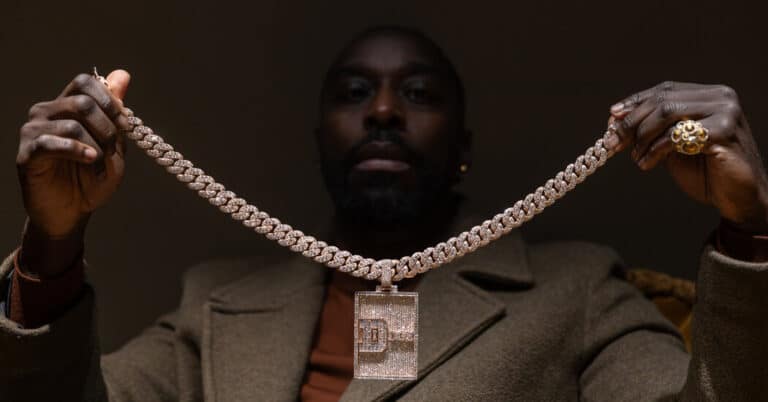A Devotional Design
İçerik Tablosu
Diamonds, however, were not part of what some jewelry experts say was the earliest version of the style: a long piece of fabric, with a hole in the middle so it could be pulled over the head, worn by monks in the Middle Ages to protect their robes at work. Eventually it became what Catholics now call a scapular: two small rectangles of fabric, usually printed with an image of Jesus or the Virgin Mary, joined by cords or straps. Once it is put on over the head, one square hangs in front, the other in back, and the cords sit on the shoulders.
Ms. Lichtenberg’s Scapulaire necklaces borrow their name from that devotional item, but it was their form, not their meaning, that interested her — even if it is on a smaller scale.
“The scapular is workable on two flat surfaces, as well as its edges,” she wrote in a message, giving her 12 different surfaces between the two pendants — front, back and edges — to decorate or add images or words. “It was interesting for me to explore this more conventional form and add our poetry and complexity to it.”
Her Believe necklace, for example, features two pendants: the smaller one, with an alien’s face surrounded by 16 small diamonds, hangs above the larger one, which shows the planet Saturn and stars detailed with seven diamonds and 12 sapphires. The necklace, which is 11,000 euros ($11,985), has an 18-karat gold chain 80 centimeters (31.5 inches) long.
The Surrealist artist Man Ray was the inspiration for Venyx’s new nine-piece limited edition collection, which includes two pendants by the London-based brand. One plaque in 18-karat gold and enamel depicts bright red lips floating over a mountain landscape ($3,900), a homage to Man Ray’s 1933 painting “The Lovers.”
A Devotional Design
Diamonds, however, were not part of what some jewelry experts say was the earliest version of the style: a long piece of fabric, with a hole in the middle so it could be pulled over the head, worn by monks in the Middle Ages to protect their robes at work. Eventually it became what Catholics now call a scapular: two small rectangles of fabric, usually printed with an image of Jesus or the Virgin Mary, joined by cords or straps. Once it is put on over the head, one square hangs in front, the other in back, and the cords sit on the shoulders.
Ms. Lichtenberg’s Scapulaire necklaces borrow their name from that devotional item, but it was their form, not their meaning, that interested her — even if it is on a smaller scale.
“The scapular is workable on two flat surfaces, as well as its edges,” she wrote in a message, giving her 12 different surfaces between the two pendants — front, back and edges — to decorate or add images or words. “It was interesting for me to explore this more conventional form and add our poetry and complexity to it.”
Her Believe necklace, for example, features two pendants: the smaller one, with an alien’s face surrounded by 16 small diamonds, hangs above the larger one, which shows the planet Saturn and stars detailed with seven diamonds and 12 sapphires. The necklace, which is 11,000 euros ($11,985), has an 18-karat gold chain 80 centimeters (31.5 inches) long.
The Surrealist artist Man Ray was the inspiration for Venyx’s new nine-piece limited edition collection, which includes two pendants by the London-based brand. One plaque in 18-karat gold and enamel depicts bright red lips floating over a mountain landscape ($3,900), a homage to Man Ray’s 1933 painting “The Lovers.”


